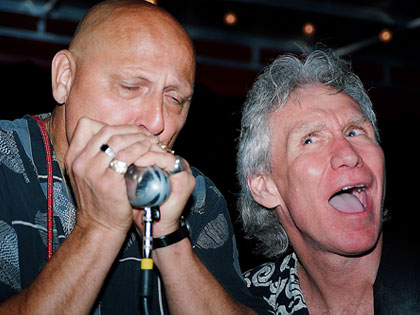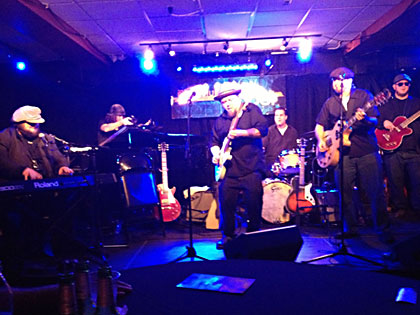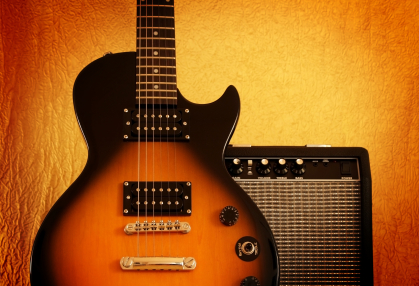 Did you ever go to see a band and think “why is this band so bad?” Something just doesn’t sound right, but you can’t quite put your finger on it.
Did you ever go to see a band and think “why is this band so bad?” Something just doesn’t sound right, but you can’t quite put your finger on it.
Maybe even the individual pieces are fine. The singer may be OK. The guitarist plays some nice leads. Maybe the drummer has some chops.
But still something is wrong.
I’m willing to bet that nine times out of 10 the band is just not playing together. It sounds like each player is out of sync or “marching to a different drummer.” There is no groove that they all lock into.
Now for players who are just learning to play their instrument this is not uncommon. They are so busy trying to play their part “right” that they just hear themselves and never listen to themselves in the context of the other players.
Or maybe they are so egocentric that they don’t want to listen to the other players in the band. It’s all about them.
What Makes A Great Band

Derek Trucks and Susan Tedeschi
Now contrast that with a great band that just sounds good. Again you can’t quite put your finger on why, but they just make you want to listen and maybe get up in dance. They have a great groove and everyone is totally in sync with what the other players are doing.
I’ve been in both kinds of bands. Especially when I was just learning to play. After awhile you begin to realize what’s happening…
The players are not listening to each other.
And really all it takes is one player who’s off in his own world to ruin a potentially good band. Now I agree that that one player is usually the bass or the drums or a guitar player that’s way too loud. But generally it does come from the rhythm section. By that I mean the bass, drums, and the other main rhythm instruments. The ones who are ultimately responsible for the groove.
What Is A Groove
Any good musician will talk about the groove of a song being critical. Without a solid groove a song will never be even good let alone great. You’ve heard the old saying… “it don’t mean a thing if it ain’t got that swing.” Yes “swing” is the essence of what makes a great groove.
So what the heck is a groove?
Again, like many subtle aspects of music it’s hard to define… hard to put into words. It’s certainly partly defined by everyone playing in good time… together… In other words, everyone keeping a solid rhythm without speeding up or slowing down (unless they do it on purpose).
But it’s also much more than that. Good bands speed up and slow down all the time. The difference is they all do it together.
So if I had to name the one skill required for a great groove it would be “listening.” The ability to listen to everyone else in the band at the same time you are playing your part. Now you may not have to listen as hard as I was doing in the picture in the upper right, but it can’t hurt. And the key is to not only to listen, but to leave room in what you are playing for the other instruments. More about that later.
But this listening skill is not always easy to learn. Some musicians have it naturally. But most of us have to learn how to listen. And if you are struggling with learning your own instrument it can be hard to be able to hear the other instruments too. You are concentrating on what you’re doing so there is not much attention left for the other instruments. But until you can master this skill you will never be a good musician and you can never be in a great band. So it’s definitely worth giving your listening skills some serious thought.
It’s About Attention
And yes it does come down to a quality of attention. You have to divide your attention among all the other instruments in the band. You have to really be able to “feel” all the other instruments as they play. And sometimes it’s not even consciously. It’s more sub-conscious and even subliminal. You are feeling as much as hearing.
It’s almost as if you are playing all of the other instruments as well as your own. You sort of use each of their parts in what you are playing and that’s what locks you into one synergistic whole.
And synergy is the goal. If you don’t know that word… synergy is when the whole is greater than the sum of its parts. If that’s doesn’t define a great band nothing does.
And when that happens on stage it’s truly magic. When you reach that point you can almost sense what the other players are going to do… before they do it. You are playing as one instrument. It’s like a flock of birds that seems to move as one mind. And that feeling is truly magical if you and your band can get to that point.
Some Tips For Getting In The Groove
But fortunately this magical synergy can be learned. At least to a degree. Here are some things you can do in your band to develop synergy and groove.

Southern Hospitality
Practice In Small Groups
The more instruments that you have to listen to the harder it is to listen and find the groove. Try practicing with just bass, drums and one guitar. Or with just singer and guitar. In other words, break it down to a more manageable listening environment. Then you can add other instruments once you get the small group really tight.
Practice With A Metronome
You don’t have to do this with the band. But certainly develop your own sense of time and check yourself to make sure you ARE playing in time. If you have a hard time playing along with a metronome you’ll have a hard time playing with a band… and you know you have something you need to work on!
Record Rehearsals
In fact record everything you do. Sometimes it takes that “big picture” view to hear that things aren’t in sync, or that one instrument that is just not playing with everyone else. It may be hard to accept the truth, but a recording is really the ultimate “truth” of the situation.
Listening this way helps you get that objective viewpoint. And sometimes if you have trouble hearing what others are doing, this is the perfect opportunity to finally know what the bass player is actually playing… and deciding if it fits… or not. Again it’s not always easy to accept the truth but it must happen for a band to ever get good and eventually be great.
A great lesson is to get into a studio and record all the parts separately. That will show you how things should fit together. Of course, you can start with just the rhythm section.
Simplify Parts
Just because you know every note in a scale or can play complicated parts does not mean that you should. The best music often has very simple parts that when played together with other simple parts creates that great synergistic whole. A lot of great old blues bands played very simply. And a lot of great young blues bands, with players that could be doing much more, decide to do less for the good of the band.
The saying “less is more” is so true, especially when it gets applied to a rhythm section.
Here’s a great young blues band that “gets it.”
Listen, Listen, Listen
This is of course the key. If you have trouble listening and hearing everyone, stop playing and just listen to the other players. Or make your part really simple so you can listen more easily. Try to really feel the other parts and the overall sound. Then come back with a part that truly fits in with what others are doing.
If when you stop, you still don’t hear the groove, then maybe the other players need to stop too…. and listen. Unless everyone’s part truly fits together the song will never work.
Harmonic Groove
Now I’ve mostly been talking about rhythmic grooves until now. Do the basic parts of the song fit together rhythmically? But the song also has to fit together harmonically.
What do I mean by that?
Well there’s a reason that a bass plays in a low register. The bass usually has a particular role in the music… to hold down the root note of the chord as the song moves through a progression. Of course this is not a hard and fast rule but generally that’s what the bass player is expected to do.
Then the other instruments fill in the other parts of the harmonic spectrum from low to high notes… and all those notes in between.
 Now if the guitar starts playing in the same register as the bass. Or the bass moves up into the same register as the guitar, now there could be a clash. If the notes aren’t perfectly in tune, or if the sound of the notes don’t blend, now the song doesn’t sound so good.
Now if the guitar starts playing in the same register as the bass. Or the bass moves up into the same register as the guitar, now there could be a clash. If the notes aren’t perfectly in tune, or if the sound of the notes don’t blend, now the song doesn’t sound so good.
Or what happens if you have two guitars in the band (or more). And they only know how to play chords in first position. Now those same exact chords played in the same place on the guitar neck have to blend together. They also have to be in tune with each other. Now I’m not saying this won’t work… it can if the players are good. But wouldn’t it make more sense for each guitar to stay in their own part of the harmonic spectrum? Let one guitar play low chords and the other guitar play higher chords… or not play chords at all… just notes or melodic lines?
And remember… silence is part of music too. What would music be without silence. You can always play silence as your part.
And speaking of notes… Wouldn’t it make sense if the guitar didn’t play the low notes in the chords at all? That’s what the bass player is suppose to do. So if the guitar plays chord extensions that leave out the lowest notes in the chord, that will make for a much better blend between instruments. Notes won’t clash and the sounds should blend well. Pay attention to great bands. That’s often what they do.
In a sense, they are playing the chord together, with the bass playing one part of the chord and the guitar playing other parts of the chord. And that’s a good way to think about the whole song and how it should be arranged. Let each instrument inhabit it’s own part of the soundscape… of the sound spectrum from low to high notes and chords.
Tone and Groove
Now there’s one final aspect of playing a song together. And this is the least difficult to get right because you can consciously control it.
In the example above where there are two or more guitar players in a band, there is always the potential of the guitars not blending together. That’s partly because they both have the same instrumental harmonic tone range. Of course, the guitar has a wide musical range so there’s lots of choices but, it’s often the case where you see a band and the guitars are playing the same exact chords in the same position.
Again this can be fine if they are good players or if they do one other thing… They play with completely different sounds or tones.
If one guitar has a very clean tone and the other guitar has a more distorted tone, they may be able to fit together quite nicely. In fact it could sound great. And if one guitar is a single coil Stratocaster with that unique sound, and the other guitar is a humbucking Les Paul with that big fat sound.
Instrumentation
Of course all of these harmonic issues can be avoided if the instrumentation for the band takes tone and musical spectrum into account. Personally I love a blues band with bass, drums, one guitar, keyboard, and perhaps horn or harmonica. Each of those instruments has a very distinct sound and would seldom be mistaken for the other. They can all blend well together.
Of course the more instruments you add to a band the more potential you have for groove issues, both rhythmic or harmonic. So be careful how you put your band together. But personally I love a big band with lots of instruments. Tower of Power, or Roomful of Blues are my type of band. Actually any Big Band from the swing era sounds good to me. Know any of them looking for a guitar player?
Another factor that makes a band great is understanding how to create Tension and Resolution. And it doesn’t take a whole lot of new skills. It just takes understanding how tension and resolution works in music. Click on this link to learn more.



